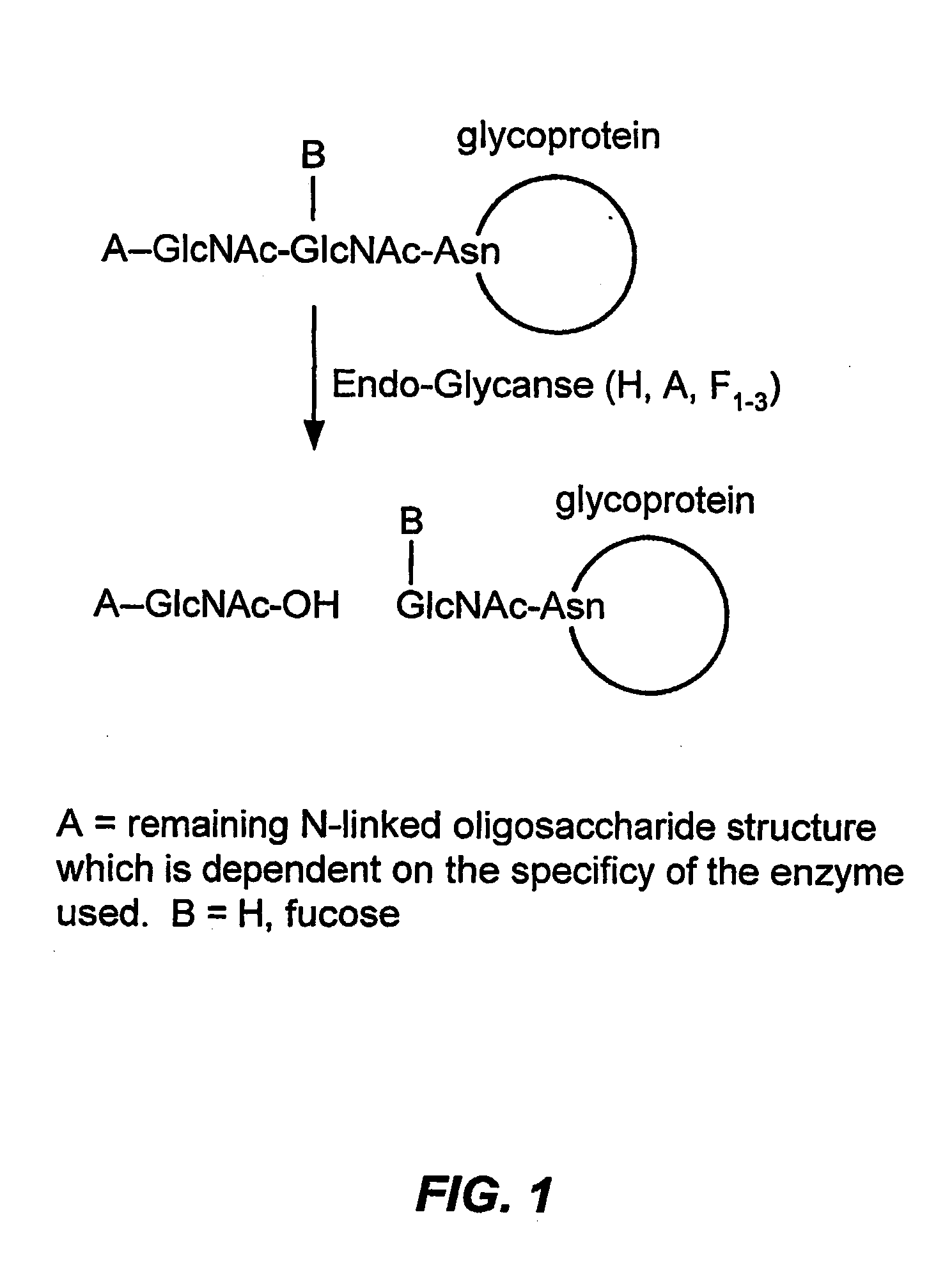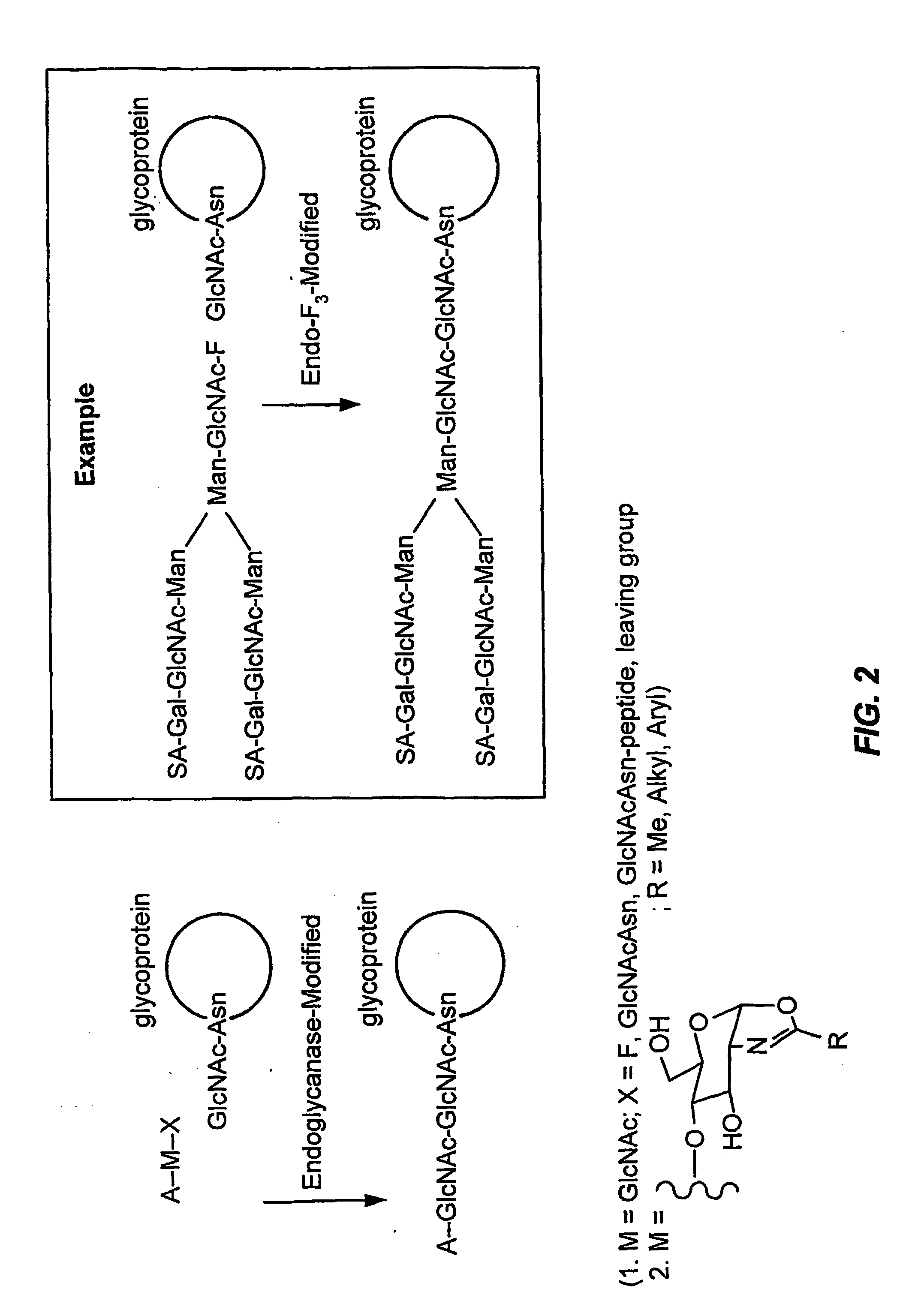Glycoprotein remodeling using endoglycanases
a glycopeptide and endoglycanase technology, applied in the field of glycopeptide remodeling, can solve the problems of inability to achieve the desired glycosylation pattern of a recombinantly produced protein, inability to produce recombinant mammalian glycopeptides in insect cell systems, and substantial difficulties in chemical synthesis of glycopeptides
- Summary
- Abstract
- Description
- Claims
- Application Information
AI Technical Summary
Benefits of technology
Problems solved by technology
Method used
Image
Examples
example 1
1.1 Preparation of Bi-antennary-glycan-F (FIG. 2.1)
The biantennary-N-linked glycan (0.5 g) isolated from egg protein and endo-F3 is added to a solution containing pyridine (20 mL) and DMAP (0.1 g). The solution is cooled to 0° C., and acetic anhydride (400 mole eq) is slowly added. The reaction is warmed to 40° C. until the reaction is complete as determined by TLC. The reaction mixture is concentrated to dryness and ethyl acetate is added to dissolve the residue. The organic layer is washed with water, sat. sodium bicarbonate / water and water. The organic layer is dried (Na2SO4). After filtration, the filtrate is concentrated to dryness and chromatography (silica) is performed on the residue. Appropriate fractions are collected, concentrated and characterized by NMR and MS.
The chromatographed material is dissolved in pyridine and cooled to 0° C. A solution of pyridine-HF complex is then added to the solution and it is stirred for 8 hrs after the addition is complete. The reacti...
PUM
| Property | Measurement | Unit |
|---|---|---|
| temperature | aaaaa | aaaaa |
| temperature | aaaaa | aaaaa |
| structure | aaaaa | aaaaa |
Abstract
Description
Claims
Application Information
 Login to View More
Login to View More - R&D
- Intellectual Property
- Life Sciences
- Materials
- Tech Scout
- Unparalleled Data Quality
- Higher Quality Content
- 60% Fewer Hallucinations
Browse by: Latest US Patents, China's latest patents, Technical Efficacy Thesaurus, Application Domain, Technology Topic, Popular Technical Reports.
© 2025 PatSnap. All rights reserved.Legal|Privacy policy|Modern Slavery Act Transparency Statement|Sitemap|About US| Contact US: help@patsnap.com



